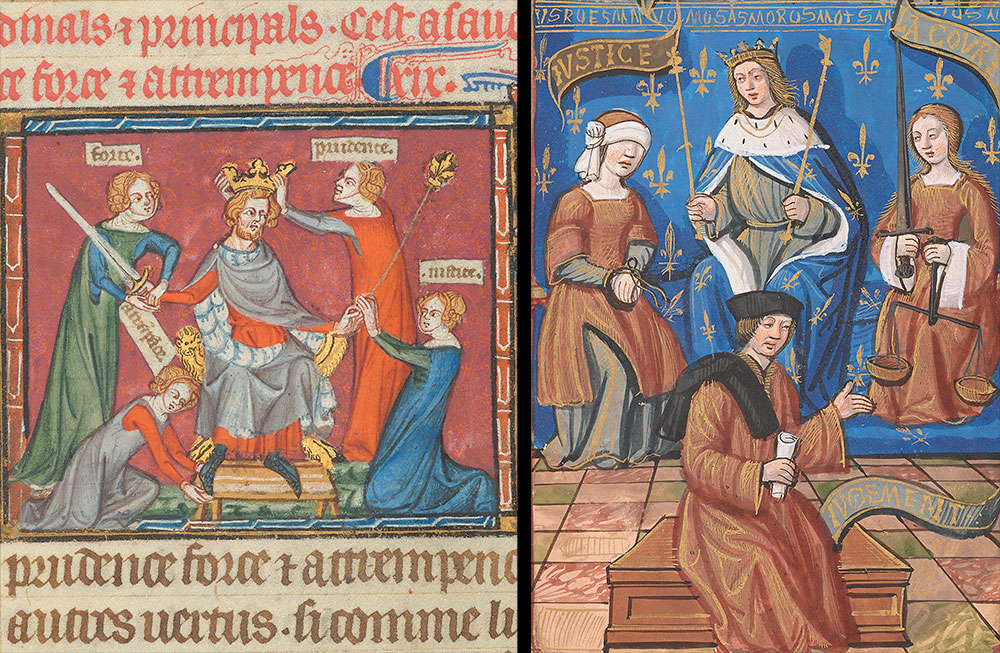These two allegorical illuminations of enthroned rulers appear in “mirrors for princes," a popular literary genre throughout the Middle Ages and Renaissance. Textbooks for kings and other rulers flourished in the West as well as in Chinese, Islamic, and Byzantine cultures. At left, a monarch is advised by the four cardinal virtues. Fortitude, Temperance, and Prudence give the king his sword, shoes, and crown, but it is Justice who confers on him a scepter, the symbol of his right to rule. The ruler on the right is identified as Magnanimity (greatness of spirit). A figure labeled Law looks his way, brandishing a sword, but he turns to gaze at Justice, whose blindfold and bound hands symbolize impartiality.
Left: Advice to Kings, in French, France, Paris(?), 1347–50. Purchased by J. Pierpont Morgan, 1911. MS M.456, fol. 25v (det.).
Right: Pierre Gringore: The Abuses of the World, in French. France, Rouen, ca. 1510. Purchased by J. Pierpont Morgan, 1899. MS M.42, fol. 33r (det.).

